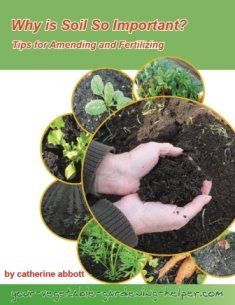Vegetable Gardening Frustrations: Lessons for a Better Harvest
Every vegetable gardener knows that while the rewards are sweet, the vegetable gardening frustrations can be a bit bitter. Reflecting on those challenges is a key part of growing forward, helping us to understand and address potential issues before the next planting season. Here are some common frustrations that might resonate, along with strategies to make next year smoother and more rewarding.
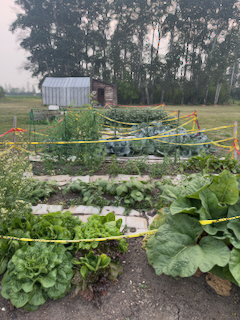 My 2024 vegetable garden
My 2024 vegetable garden1. Pest Problems
Pests can be the bane of any gardener’s existence. Maybe aphids took over the kale, or tomato hornworms decimated the tomato plants. For me it wasn’t pests but deer. I was able to erect a temporary fence in time to save some of my broccoli and cabbages. Reflecting on how pests were managed (or not managed) last season is essential for finding better solutions.
Lesson for Next Season:
Consider pest management strategies, like planting pest-repellent companion plants such as marigolds, basil, and dill. I have done this in the past and it has worked. Dill definitely will attract the aphids. I am budgeting for a better fence for next season.
Another approach is introducing beneficial insects, like ladybugs and lacewings, which feed on common pests. Checking plants regularly can also help catch infestations early.
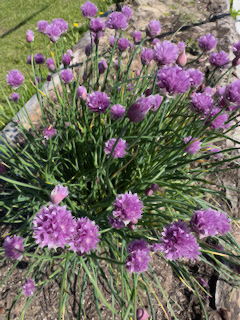 Flowering chives attract bees
Flowering chives attract bees2. Inconsistent Watering
Many gardeners experience issues with watering, whether from unpredictable weather, lack of time, or inadequate irrigation. Overwatering can lead to root rot and mold, while underwatering stresses plants and reduces yields.
We had the perfect amount of rain this past season, about an inch of rain every 10 days or so. I did not have to do any extra watering and my veggies loved the natural rain water!
Lesson for Next Season:
Set up a drip irrigation system, ideally with a timer, for a more hands-free approach. Mulching around plants helps retain moisture, which can reduce the need for frequent watering and prevent soil from drying out on hot days.
3. Poor Soil Quality
Soil quality can be a hidden culprit behind a less-than-thriving garden. Vegetables require a balanced nutrient profile and good drainage, so if plants showed stunted growth or yielded poorly, the soil could be the issue.
My carrots, beets and turnips did not do well. I have clay soil and it gets quite hard and root veggies do not like this.
Lesson for Next Season:
A soil test will reveal if your soil lacks nutrients or has an imbalanced pH. Amend the soil based on test results by adding organic compost, aged manure, or other nutrient-rich additives.
My garden spot is fairly new so the soil needs more ammending. Getting some aged manure is on my list for next spring.
I always plan a rotation system, which can help maintain soil health by avoiding nutrient depletion.
4. Weed Invasion
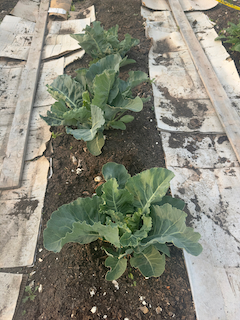
Pulling weeds may feel like a never-ending task, especially if they’re invasive and fast-growing. Weeds compete with vegetables for sunlight, water, and nutrients, which can significantly reduce the productivity of your garden making them one of the most popular vegetable gardening frustrations.
I put cardboard down on my pathways which helped to keep the weeds down, giving me more time to concentrate on my garden beds.
Lesson for Next Season:
Consider using mulch or landscape fabric around plants to suppress weed growth. Regularly checking the garden and pulling weeds when they’re small prevents them from going to seed and spreading. Alternatively, planting densely can also reduce the room available for weeds.
5. Timing Mistakes
Planting too early or too late can lead to disappointing results. Cool-season crops can wilt in unexpected heat, while warm-season vegetables struggle if planted in chilly spring soil.
I planted too much lettuce, spinach and chard at one time, which then all needed to be harvested at the same time. Too much of it went to seed before I could eat it all.
Lesson for Next Season:
Invest in a planting calendar or use an app to track frost dates and optimal planting times for each crop. Keeping a gardening journal where you record planting and harvest dates, successes, and mistakes can be a valuable tool for timing improvements. Succession planting can help with a harvesting schedule.
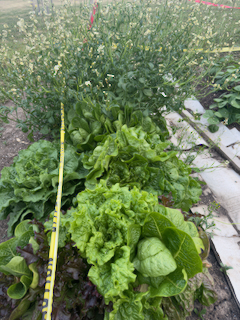 Gone to seed before I can eat everything
Gone to seed before I can eat everything6. Space Constraints
Many gardeners find themselves planting too many vegetables for the available space. Overcrowded plants compete for nutrients and water, and limited airflow increases the risk of disease.
I am lucky I have more than enough space so I do not have to worry about overcrowding.
Lesson for Next Season:
Be realistic about space needs when planning your garden. Use vertical gardening techniques to maximize space, such as trellises for vining plants. Practicing crop rotation and succession planting will also help use the garden space efficiently without overcrowding.
7. Unpredictable Weather
Weather is one factor out of a gardener’s control, and last season may have brought excessive rain, drought, or heatwaves that stressed plants or delayed harvests.
Lesson for Next Season:
Preparation and flexibility are key. Keep row covers, shade cloth, and mulch handy to protect plants from temperature extremes. You can also consider varieties bred for resilience to your specific climate conditions, and stagger plantings for a steadier supply even when weather surprises occur.
8. Disease Challenges
Fungal, bacterial, and viral diseases are common in vegetable gardens. Blight on tomatoes, powdery mildew on squash, or bacterial wilt on cucumbers can all ruin crops and spread quickly if not managed. I have experienced all over the years. What is a problem one year will not neccesarliy be an issue the next, so taking it one year at at time works for me.
Lesson for Next Season:
To minimize disease, start by rotating crops and practicing good sanitation, like removing dead plant material after harvest. Opt for disease-resistant varieties and ensure proper spacing to allow good airflow. I do a regular check of my garden for early symptoms of disease, this can help manage problems before they become widespread.
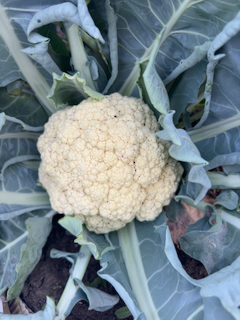 Cauliflower was a win this year
Cauliflower was a win this year9. Limited Pollination
If plants flowered but did not set fruit, poor pollination may be the cause, especially for crops like squash and tomatoes that rely on pollinators.
Lesson for Next Season:
Attract pollinators by planting native flowers, reducing pesticide use, and creating habitat for bees and butterflies. For those with limited pollination activity in their area, hand-pollinating using a small brush can be a great alternative.
Reflection on Vegetable Gardening Frustrations
Reflecting on these common vegetable gardening frustrations provides an opportunity for a better vegetable garden next season. Each season is a learning experience, and with patience, practice, and a bit of proactive planning, next year’s garden can bring more growth and fewer headaches. Happy Gardening!
Recent Articles
-
Organic Gardening soil amendments - List of material?
Aug 09, 25 10:57 AM
What materials are best used as organic gardening soil amendments? -
Tips for disease control in your vegetable garden
Jul 14, 25 11:15 AM
Easy tips for disease control to keep your vegetable growing its best. -
Joy of vegetable Gardening
Jul 14, 25 11:01 AM
Everything you need to know is right here to have Joy of Vegetable Gardening




